MRI
Our MRI Services
InHealth is an established provider of fully managed MRI services, delivered from either mobile, relocatable or fixed sites, including InHealth’s Community Diagnostic Centres.
MRI scans per year
MRI-trained radiographers
MRI scanners in the UK
An MRI (Magnetic Resonance Imaging) scan uses strong magnetic and radio waves to produce detailed images of the inside of the human body without using X-rays.
We continue to invest in our MRI facilities so we can offer patients rapid access to state-of-the art equipment and high quality services.
All our scans are carried out by HCPC registered Radiographers with specialist training in MRI.
Our clinical reports are delivered by experienced Consultant Radiologists who are GMC Registered doctors and fellows of the Royal College of Radiologists (RCR), with specialist interests in MRI.
An MRI scanner is a large, hollow tube open at both ends. MRI is a safe, painless technique with no known risks, provided the safety questionnaire is correctly completed.
Where possible, please wear comfortable, loose clothing with minimal metal fastenings (such as zips and press studs/poppers). Thin cotton-based clothing and minimal layers help encourage cooling during the scan.
If necessary, you may be asked to change into a gown for your scan.
You may prefer to leave valuable items at home. Please contact your referrer for your results and further information. Results usually take a few days to be processed but our staff will advise you on the day as to how long you will need to wait.
What to expect from your MRI scan
Watch our short video on the MRI Patient Journey and take a look at the information below, to see what is involved in having an MRI scan at one of our clinics.
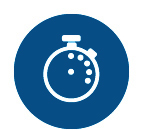
Time
The time taken for the scan will vary depending on what is being scanned but on average can take 20 to 40 minutes.
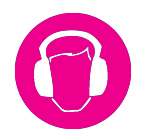
Noise
The MRI scanner will make loud and unusual noises whilst taking your pictures. Earphones and/or earplugs will be given, and music may be available.
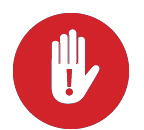
Hazard
The MRI scanner uses a powerful magnet so people with certain types of medical implants or devices may not be able to be scanned. Please remove all metal from your body including loose change from your pockets.
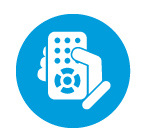
Control
You will be given a call bell whilst having your scan. Should you need to stop simply squeeze this and a member of staff will be straight in.
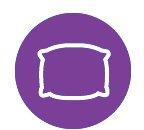
Comfort
We will use pads, cushions and supports to help make you more comfortable for the scan. It is important to be as comfortable as possible from the beginning to help you keep still throughout.

Magnet
An MRI scanner is a large, hollow cylinder open at both ends. A strong magnetic field and radio waves are used to create images of organs and other structures inside you.

Coil
A ‘receiving device’ like an aerial, may be placed behind or around the part of the body being examined. This detects the tiny radio signals emitted from the body during the scan.

Communication
There is an intercom in the scanner so you will be able to talk to the MRI operator between scans.
Information leaflets
We have produced a number of patient-approved leaflets, which can be downloaded below

MRI Leaflet

Paediatric MRI Leaflet
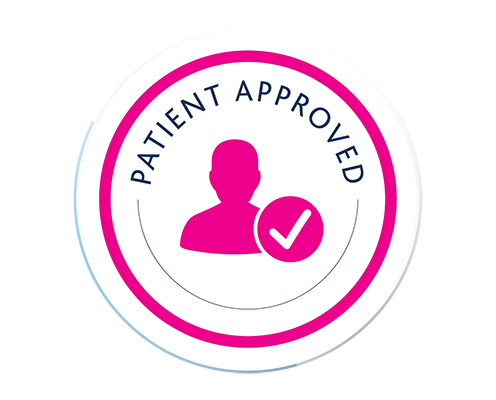
Easy Read MRI Leaflet

Small Bowel MRI Leaflet

Large Font MRI Leaflet
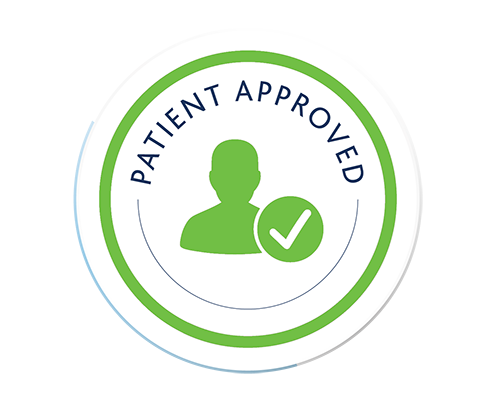
What to Expect Leaflet

MRI PROCTOGRAM Leaflet

DIRECT MRI ARTHOGRAPHY Leaflet

MRI PATIENT SAFETY QUESTIONNAIRE

MRI PATIENT SAFETY QUESTIONNAIRE LARGE FONT
Injections and drug administration in MRI
As part of your MRI scan, it may be necessary to be given an injection for administering a special ‘dye’ or contrast media, called gadolinium, or a drug called Buscopan. Find out more below.
What is Gadolinium Contrast?
Gadolinium is a mineral-based substance used in MRI to improve the quality and visualisation of structures on images. It helps in the assessment of whether there is any disease or abnormality present. Gadolinium contrast media is specially formulated to ensure its safety for injection into the body, and once injected through a vein, gets eliminated via the kidneys.
How are injections given?
Injections are given via something called a cannula, which is a small plastic tube that sits in the vein. Insertion of a cannula shouldn’t be painful, and some patients may feel a sting or some slight discomfort around the injection site. It will remain in position for the duration of your scan and a little time afterwards. During the injection it may feel cold or uncomfortable but should not be painful. The injection will be given by trained MRI staff and normally takes about 15-20secs. This may be given by hand injection or with the use of a remote automated injector, depending on the area being scanned. You will be given information regarding what injections you have been given during your scan and may be asked to remain in the department for 15-30mins after the injection to make sure you are feeling well before heading home.
Are the injections safe?
Gadolinium contrast is generally an extremely safe drug, although as with any drug side effects or reactions can occur, these are uncommon. In patients with normal kidney function, most of the gadolinium contrast injected will be eliminated in the urine within 24 hours. You should drink plenty of water to stay hydrated and help this process following a scan. In addition to the standard safety questions prior to having an MRI scan, you will also be asked specific questions relating to receiving an injection. These questions help staff assess your suitability for injection and highlight any particular areas of consideration or concern. These will be discussed with you as part of the consenting process, and if there is any concern over your being able to safely have the injection it will not be given.
If you are pregnant or breastfeeding please inform a member of staff before receiving any injection
Can I refuse an injection?
If you are not happy to have the contrast media then you can refuse. This may affect the accuracy of your scan results and require additional imaging to compensate. In most cases, knowledge of needing an injection is known in advance, but on some occasions this does not become apparent until the scan has started. This does not mean something is wrong but will help improve scan quality.
Are there any short-term side effects?
Immediate reactions have been reported at a rate of 0.06%-0.09% (1 in 60-90 thousand) and more severe reactions have an estimated incidence of 0.0025%-0.05% (1 in 25-50 million) – RCR, 2019.
• A small number of patients may notice mild nausea or a headache (about 1-4 in 100)
• Vomiting can occur but is rare (less than 1 in 100 injections)
• Mild reactions can result in approximately 1 in 1000 patients with symptoms such as an itchy rash
• More severe reactions can occur in approximately 1 in every 10,000 patients with symptoms such as difficulty breathing and mouth swelling.
Part of the checking process allows some assessment of the potential for reaction. If there is going to be a reaction, these are normally experienced early on before completion of the scan, and clinical staff are on hand to support and respond as required.
Are there any long-term side effects?
Other conditions relating to the use of Gadolinium are Nephrogenic Systemic Fibrosis (NSF) and retention. Both conditions are potential longer-term side effects resulting from gadolinium breakdown and interactions within the body. NSF is a rare condition associated with the use of gadolinium is a small proportion of patients with severely reduced kidney function. As part of the checks prior to injection, an assessment of your kidney function is made and where there is a need to formally check function beforehand this will be arranged.
Considerations that may require formal testing of renal function include:
• Age – patients aged 75yrs or older
• History of kidney disease
• Taking medication for high blood pressure
• History of diabetes mellitus
• Having had, or planning to have, a liver transplant
Retention has more recently been recognised as a result of repeated exposure to gadolinium where small quantities have been found in tissues (mainly bones and the brain) but with no known adverse effects. In both cases, the need for contrast is assessed to ensure that is it essential to support diagnosis of your clinical symptoms and that any benefit outweighs any potential risk of harm. The contrast media used within InHealth are considered low risk, even to those with severe kidney problems, and so further reduces any concerns for harm.
What is Buscopan?
Buscopan is an anti-spasmodic medication commonly used to treat abdominal pain, such as cramps and inflammatory bowel disease. It is given in MRI to reduce the involuntary movement of bowel tissue which can blur images, and therefore helps improve the quality of scans. It is usually given into a vein in your arm but can be given through a muscle in your upper arm or thigh which is slower release and allows the effects to last longer if needed. Either way, you will be asked some questions in advance to ensure your suitability to having Buscopan as some conditions can be exacerbated by the medicine. The main conditions of note are:
• Pre-existing heart conditions such as a fast heart rate, angina and heart failure
• History of glaucoma in your eyes
• Being in urinary retention – having the inability to pass urine combined with the urge to do so and significant lower abdominal pain
Effects of Buscopan usually last for between 30-60minutes and should generally go unnoticed. In some occasion’s patients may notice blurred vision or a dried mouth which will wear off as the drug loses effect. Where any patients experience blurred vision, it is advised that you don’t drive until vision has returned to normal, and so you may want to arrange for someone to collect you to take you home.
Where can I get more information?
Further information is available from the following websites.
www.mhra.gov.uk/spc-pil
www.medicines.org.uk/emc
Frequently asked questions
Here are some other questions we’re often asked about having an MRI scan
WhY is the scanner noisy?
Due to the nature of MRI, (the scanners are made up of various elements, part of the scanner contains coil windings) the coil windings within the scanner vibrate as electric current pulses through them which in turn causes them to knock and bang against the internal housing, leading to the noises you hear which will vary with different types of scans performed.
Many people put tunes to the noises produced, and they are often quite rhythmical and hypnotic like the clattering of a train.
How loud is it?
Within the scan room, the noises produced are generally around 100dB, sometimes higher, equivalent to those experienced in a rock concert.
Can you reduce the noise?
The noise produced cannot be adjusted although there are increasing developments by scanner manufacturers which allow limited adjustment of noise, and in some cases this can be as low as a vacuum cleaner. This is dependent on what type of scanner is available at the location for your scan.
However, due to the nature of the noise levels experienced we do provide ear protection that must be used, and this will be explained and provided by our staff as part of your scan. Dependent on local scanning equipment this may be earplugs, ear defenders/headphones, or a combination of both. Please follow advice provided by our scanning teams, it is for your comfort and safety.
In some circumstances music can also be played over the ear protection to help provide some better background to the scan and help pass the time quicker.
Will somebody be able to talk to me and how often?
The member of staff performing the scan will be able to communicate with you over an intercom between scans throughout the procedure. They can see you at all times and a call bell will also be provided should you require their attention during a scan.
Sometimes breathing instructions are required, you may hear these instructions via an automated voice of the scanner, this does not mean our staff have left you alone, they are still behind the window and in easy access should you need them.
Can I have a break between the scans?
An MRI examination is made up of a series of scans (also termed sequences) which can each last between 1-5minutes depending on what is being performed. Whilst a member of staff can talk to you between each scan, whilst we are performing a single body area it is best to remain in the same position throughout so as not to require resetting and add delay to the examination. However, if at any point you do need to come out this is possible.
When scanning more than one body part which will take longer, there are often natural breaks when equipment may need to be changed or repositioned before continuing. At these points you will be bought out of the scanner and have an opportunity to take a breather or have a wriggle as required.
Your comfort is important and helps us achieve the best possible images so please discuss this with the scanning team on the day. We have plenty of pads and techniques which may help.
Can I bring someone into the room with me?
For our younger patients (<16) or those more nervous of the scan it may be that someone accompanying you can remain in the scan room with you whilst your scan is being performed. This can only be one person and is dependent on them also being safe to enter the magnetic field and remain in the room – they will be asked to complete a Safety Screening Questionnaire the same as you are for your scan.
Does the scanner stay as it is?
The scanner itself is a tunnel shaped machine, open at both ends, and remains open throughout. The only piece of equipment that will be possibly placed on you and touching is what we term a coil, which is essentially the piece of equipment that acts as an aerial and receives the signal to help construct the images. The scan table may move into different positions during the examination but the member of staff performing the scan will advise when this happens.
Will it go dark?
The room lights will remain on for the entirety of the examination, plus there are lights within the bore of the scanner which also remain on the whole time to keep the space light and bright. There is also a constant flow of air down the bore of the magnet to help cool and calm.
Can you scan with the door open?
Unfortunately the scan room door does need to remain closed for the duration of the scan in order to prevent interference with the quality of the images.
Due to the nature of MRI something called a Faraday cage is built into the room walls so as to prevent external radiofrequency waves (such as from the local radio station!) from distorting images.
Can I be scanned without any equipment placed over me?
The equipment that may be placed around the area being examined is what we term a coil, which is essentially the piece of equipment that receives the signal, like an aerial, which go on to make the images. The reason these are placed over the area in question is that the closer these are the better the quality of pictures made. In some circumstances it may be we can acquire some adequate images without using these but this may have an impact on the diagnostic quality and is something the scanning staff will be able to discuss if you have concerns.
Do you scan the whole body and can you check other body parts at the same time?
Whilst your whole body may be within the scanner, the scans performed are very focused and it is only the area in question that is being looked at. Therefore we are guided by your referrer as to what scans are required which is set out on a request form or referral letter. This is something like a Doctor’s prescription which means only what is signed for can be scanned. The request form also then provides an indication on how much time we set aside for your appointment and cannot be added to.. If there are other areas of concern then please discuss this with your referring clinician.
Do I have to put a gown on?
Whether or not you are asked to change depends both on what is being scanned and what exactly you are wearing.
We generally advise patients to try and attend with loose fitting clothes with minimal metal fastening, or to bring something along with them, such as pyjamas or jogging bottoms etc. Even then if there are multiple layers of clothing we would suggest taking off top layers or thick jumpers so that you don’t get too warm during the scan.
Any loose metal on clothing or items in pockets has the potential to be ferromagnetic and will therefore be pulled towards the scanner at high speed. Where metal fastening are over or close to the area being scanned these need to be removed in order to prevent the distortion it causes to the images. Even then, any metal or loops of metal within the magnet which are in contact with skin (such as necklaces or bracelets) have the potential to induce heat and therefore can warm adjacent skin leading to possible skin burns. Whilst this is rare, we do all we can to try and minimise this and so if it can be removed we recommend it is. Some tattoo dyes also contain fine metallic particles which can also heat so if any discomfort is felt please alert a member of staff immediately.
Why do I have to remove all my metal when it is only my head being scanned?
The magnetic field used for MRI extends to the edges of the scan room, and due to the strength of this magnetic field any ferromagnetic items taken into the scan room will be pulled towards the scanner at high speed, causing potential harm to anyone in its way and/or the scanner itself.
Even where metal is not ferromagnetic there is potential for metallic items to heat up during the scanning process. Therefore what can be removed should be so as to reduce the risks.
How much radiation do I receive?
There is no ionising radiation used in the acquiring of MR images. Once cleared to be safe to enter the magnetic field the imaging tool is a safe technique used to image the body with no adverse side effects.
I have had an MRI scan recently, is it safe to have another one so soon?
There are no long term, cumulative effects of having multiple MRI scans.
Can I eat and drink as normal?
Unless advised otherwise you can eat and drink as normal prior to your MRI scan. For comfort we would recommend ensuring you don’t need the toilet before starting your scan as this will help keep you relaxed and still throughout.
The main examinations where eating or drinking may be a consideration are; MRCP studies looking at your gallbladder and biliary tree and Small Bowel studies – for which specific local guidance will be provided by the scanning department.
In such cases if you are diabetic please get in touch and be sure to bring some food with you for once the scan is complete.
Do you see the pictures and can you tell me what is wrong on the day?
The person who operates the scanner is not the person who will write a report on what is shown. Therefore they cannot tell you anything immediately. Your GP or whoever referred you will get a written report plus copies of the images.
However, if anything which concerns us is seen, your GP/whoever referred you will be telephoned and action taken as appropriate as soon as practicable.
Exact timeframes vary between sites but should you need to chase results please contact your referring clinician not our scanning departments.
Do you offer any relaxants to help me manage my anxiety and claustrophobia?
We cannot prescribe any medications within our scanning departments, and should you feel you need some relaxants such as diazepam to help get through a scan then please get in touch and make an appointment with your GP.
Please make the imaging department aware you have or will be taking some medication on arrival.
For your safety please ensure someone accompanies you for your scan and is able to drive you home if necessary as many of these medications can make you feel drowsy.
As an alternative please see our signposting section for alternative help with preparing for and managing your MRI Scan. Due to improvements in scanner design and the support of our imaging professionals many people nowadays find coping with a scan much easier than first expected, and this is an area we continue to investigate and improve upon.
Will I fit into the scanner?
The bore used in our conventional scanners is 60cm or 70cm in diameter. While there are weight limits on the scan table, the main consideration is around patient overall build when laying down. Our Radiographers will assess this at the time of your scan and work with you to ensure your comfort. Where there may be limitations due to your size, this will be discussed with you at the time and alternatives suggested. Should you have any concerns around your size and whether you will be able to have a scan, please contact the site at which you are booked on the appointment letter received.
We offer a fantastic benefits package, and have an innovative approach to personal and professional development, helping you to be the best version of yourself and giving you a real career pathway.
Our MRI Services
InHealth is an established provider of fully managed MRI services, delivered from either mobile, relocatable or fixed sites, including InHealth’s Community Diagnostic Centres.
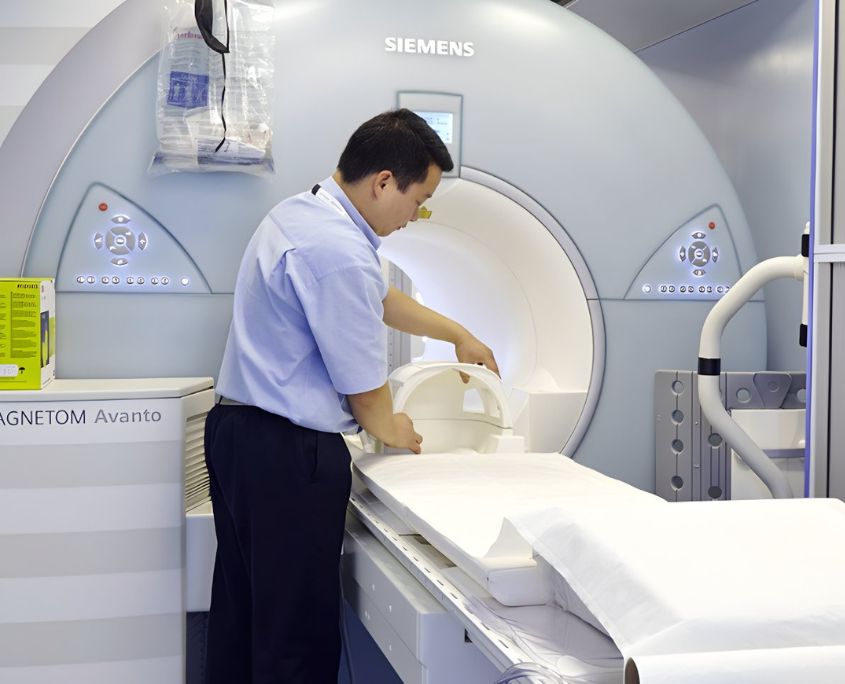
An MRI (Magnetic Resonance Imaging) scan uses strong magnetic and radio waves to produce detailed images of the inside of the human body without using X-rays.
We continue to invest in our MRI facilities so we can offer patients rapid access to state-of-the art equipment and high quality services.
All our scans are carried out by highly trained radiographers who follow a Continued Professional Development (CPD) programme.
Our clinical reports are delivered by experienced Consultant Radiologists who are on the Specialist Register and are members of the Royal College of Radiologists (RCR).

An MRI scanner is a large, hollow tube open at both ends. MRI is a safe, painless technique with no known risks, provided the safety questionnaire is correctly completed.
Where possible, please wear comfortable, loose clothing with minimal metal fastenings (such as zips and press studs/poppers). Thin cotton-based clothing and minimal layers help encourage cooling during the scan.
If necessary, you may be asked to change into a gown for your scan.
You may prefer to leave valuable items at home. Please contact your referrer for your results and further information. Results usually take a few days to be processed but our staff will advise you on the day as to how long you will need to wait.
What to expect from your MRI scan
Watch our short video on the MRI Patient Journey and take a look at the information below, to see what is involved in having an MRI scan at one of our clinics.

Time
The time taken for the scan will vary depending on what is being scanned but on average can take 20 to 40 minutes.

Noise
The MRI scanner will make loud and unusual noises whilst taking your pictures. Earphones and/or earplugs will be given, and music may be available.

Hazard
The MRI scanner uses a powerful magnet so people with certain types of medical implants or devices may not be able to be scanned. Please remove all metal from your body including loose change from your pockets.

Control
You will be given a call bell whilst having your scan. Should you need to stop simply squeeze this and a member of staff will be straight in.

Comfort
We will use pads, cushions and supports to help make you more comfortable for the scan. It is important to be as comfortable as possible from the beginning to help you keep still throughout.

Magnet
An MRI scanner is a large, hollow cylinder open at both ends. A strong magnetic field and radio waves are used to create images of organs and other structures inside you.

Coil
A ‘receiving device’ like an aerial, may be placed behind or around the part of the body being examined. This detects the tiny radio signals emitted from the body during the scan.

Communication
There is an intercom in the scanner so you will be able to talk to the MRI operator between scans.
Information leaflets
We have produced a number of patient-approved leaflets, which can be downloaded below

MRI Leaflet

Paediatric MRI Leaflet

Easy Read MRI Leaflet

Small Bowel MRI Leaflet

Large Font MRI Leaflet

What to Expect Leaflet
Injections and drug administration in MRI
As part of your MRI scan, it may be necessary to be given an injection for administering a special ‘dye’ or contrast media, called gadolinium, or a drug called Buscopan. Find out more below.
What is Gandolinium Contrast?
Gadolinium is a mineral-based substance used in MRI to improve the quality and visualisation of structures on images. It helps in the assessment of whether there is any disease or abnormality present. Gadolinium contrast media is specially formulated to ensure its safety for injection into the body, and once injected through a vein, gets eliminated via the kidneys.
How are injections given?
Injections are given via something called a cannula, which is a small plastic tube that sits in the vein. Insertion of a cannula shouldn’t be painful, and some patients may feel a sting or some slight discomfort around the injection site. It will remain in position for the duration of your scan and a little time afterwards. During the injection it may feel cold or uncomfortable but should not be painful. The injection will be given by trained MRI staff and normally takes about 15-20secs. This may be given by hand injection or with the use of a remote automated injector, depending on the area being scanned. You will be given information regarding what injections you have been given during your scan and may be asked to remain in the department for 15-30mins after the injection to make sure you are feeling well before heading home.
Are the injections safe?
Gadolinium contrast is generally an extremely safe drug, although as with any drug side effects or reactions can occur, these are uncommon. In patients with normal kidney function, most of the gadolinium contrast injected will be eliminated in the urine within 24 hours. You should drink plenty of water to stay hydrated and help this process following a scan. In addition to the standard safety questions prior to having an MRI scan, you will also be asked specific questions relating to receiving an injection. These questions help staff assess your suitability for injection and highlight any particular areas of consideration or concern. These will be discussed with you as part of the consenting process, and if there is any concern over your being able to safely have the injection it will not be given.
If you are pregnant or breastfeeding please inform a member of staff before receiving any injection
Can I refuse an injection?
If you are not happy to have the contrast media then you can refuse. This may affect the accuracy of your scan results and require additional imaging to compensate. In most cases, knowledge of needing an injection is known in advance, but on some occasions this does not become apparent until the scan has started. This does not mean something is wrong but will help improve scan quality.
Are there any short-term side effects?
Immediate reactions have been reported at a rate of 0.06%-0.09% (1 in 60-90 thousand) and more severe reactions have an estimated incidence of 0.0025%-0.05% (1 in 25-50 million) – RCR, 2019.
• A small number of patients may notice mild nausea or a headache (about 1-4 in 100)
• Vomiting can occur but is rare (less than 1 in 100 injections)
• Mild reactions can result in approximately 1 in 1000 patients with symptoms such as an itchy rash
• More severe reactions can occur in approximately 1 in every 10,000 patients with symptoms such as difficulty breathing and mouth swelling.
Part of the checking process allows some assessment of the potential for reaction. If there is going to be a reaction, these are normally experienced early on before completion of the scan, and clinical staff are on hand to support and respond as required.
Are there any long-term side effects?
Other conditions relating to the use of Gadolinium are Nephrogenic Systemic Fibrosis (NSF) and retention. Both conditions are potential longer-term side effects resulting from gadolinium breakdown and interactions within the body. NSF is a rare condition associated with the use of gadolinium is a small proportion of patients with severely reduced kidney function. As part of the checks prior to injection, an assessment of your kidney function is made and where there is a need to formally check function beforehand this will be arranged.
Considerations that may require formal testing of renal function include:
• Age – patients aged 75yrs or older
• History of kidney disease
• Taking medication for high blood pressure
• History of diabetes mellitus
• Having had, or planning to have, a liver transplant
Retention has more recently been recognised as a result of repeated exposure to gadolinium where small quantities have been found in tissues (mainly bones and the brain) but with no known adverse effects. In both cases, the need for contrast is assessed to ensure that is it essential to support diagnosis of your clinical symptoms and that any benefit outweighs any potential risk of harm. The contrast media used within InHealth are considered low risk, even to those with severe kidney problems, and so further reduces any concerns for harm.
What is Buscopan?
Buscopan is an anti-spasmodic medication commonly used to treat abdominal pain, such as cramps and inflammatory bowel disease. It is given in MRI to reduce the involuntary movement of bowel tissue which can blur images, and therefore helps improve the quality of scans. It is usually given into a vein in your arm but can be given through a muscle in your upper arm or thigh which is slower release and allows the effects to last longer if needed. Either way, you will be asked some questions in advance to ensure your suitability to having Buscopan as some conditions can be exacerbated by the medicine. The main conditions of note are:
• Pre-existing heart conditions such as a fast heart rate, angina and heart failure
• History of glaucoma in your eyes
• Being in urinary retention – having the inability to pass urine combined with the urge to do so and significant lower abdominal pain
Effects of Buscopan usually last for between 30-60minutes and should generally go unnoticed. In some occasion’s patients may notice blurred vision or a dried mouth which will wear off as the drug loses effect. Where any patients experience blurred vision, it is advised that you don’t drive until vision has returned to normal, and so you may want to arrange for someone to collect you to take you home.
Where can I get more information?
Further information is available from the following websites.
www.mhra.gov.uk/spc-pil
www.medicines.org.uk/emc
Frequently asked questions
Here are some other questions we’re often asked about having an MRI scan
What is the scanner noisy?
Due to the nature of MRI, (the scanners are made up of various elements, part of the scanner contains coil windings) the coil windings within the scanner vibrate as electric current pulses through them which in turn causes them to knock and bang against the internal housing, leading to the noises you hear which will vary with different types of scans performed.
Many people put tunes to the noises produced, and they are often quite rhythmical and hypnotic like the clattering of a train.
How loud is it?
Within the scan room, the noises produced are generally around 100dB, sometimes higher, equivalent to those experienced in a rock concert.
Can you reduce the noise?
The noise produced cannot be adjusted although there are increasing developments by scanner manufacturers which allow limited adjustment of noise, and in some cases this can be as low as a vacuum cleaner. This is dependent on what type of scanner is available at the location for your scan.
However, due to the nature of the noise levels experienced we do provide ear protection that must be used, and this will be explained and provided by our staff as part of your scan. Dependent on local scanning equipment this may be earplugs, ear defenders/headphones, or a combination of both. Please follow advice provided by our scanning teams, it is for your comfort and safety.
In some circumstances music can also be played over the ear protection to help provide some better background to the scan and help pass the time quicker.
Will somebody be able to talk to me and how often?
The member of staff performing the scan will be able to communicate with you over an intercom between scans throughout the procedure. They can see you at all times and a call bell will also be provided should you require their attention during a scan.
Sometimes breathing instructions are required, you may hear these instructions via an automated voice of the scanner, this does not mean our staff have left you alone, they are still behind the window and in easy access should you need them.
Can I have a break between the scans?
An MRI examination is made up of a series of scans (also termed sequences) which can each last between 1-5minutes depending on what is being performed. Whilst a member of staff can talk to you between each scan, whilst we are performing a single body area it is best to remain in the same position throughout so as not to require resetting and add delay to the examination. However, if at any point you do need to come out this is possible.
When scanning more than one body part which will take longer, there are often natural breaks when equipment may need to be changed or repositioned before continuing. At these points you will be bought out of the scanner and have an opportunity to take a breather or have a wriggle as required.
Your comfort is important and helps us achieve the best possible images so please discuss this with the scanning team on the day. We have plenty of pads and techniques which may help.
Can I bring someone into the room with me?
For our younger patients (<16) or those more nervous of the scan it may be that someone accompanying you can remain in the scan room with you whilst your scan is being performed. This can only be one person and is dependent on them also being safe to enter the magnetic field and remain in the room – they will be asked to complete a Safety Screening Questionnaire the same as you are for your scan.
Does the scanner stay as it is?
The scanner itself is a tunnel shaped machine, open at both ends, and remains open throughout. The only piece of equipment that will be possibly placed on you and touching is what we term a coil, which is essentially the piece of equipment that acts as an aerial and receives the signal to help construct the images. The scan table may move into different positions during the examination but the member of staff performing the scan will advise when this happens.
Will it go dark?
The room lights will remain on for the entirety of the examination, plus there are lights within the bore of the scanner which also remain on the whole time to keep the space light and bright. There is also a constant flow of air down the bore of the magnet to help cool and calm.
Can you scan with the door open?
Unfortunately the scan room door does need to remain closed for the duration of the scan in order to prevent interference with the quality of the images.
Due to the nature of MRI something called a Faraday cage is built into the room walls so as to prevent external radiofrequency waves (such as from the local radio station!) from distorting images.
Can I be scanned without any equipment placed over me?
The equipment that may be placed around the area being examined is what we term a coil, which is essentially the piece of equipment that receives the signal, like an aerial, which go on to make the images. The reason these are placed over the area in question is that the closer these are the better the quality of pictures made. In some circumstances it may be we can acquire some adequate images without using these but this may have an impact on the diagnostic quality and is something the scanning staff will be able to discuss if you have concerns.
Do you scan the whole body and can you check other body parts at the same time?
Whilst your whole body may be within the scanner, the scans performed are very focused and it is only the area in question that is being looked at. Therefore we are guided by your referrer as to what scans are required which is set out on a request form or referral letter. This is something like a Doctor’s prescription which means only what is signed for can be scanned. The request form also then provides an indication on how much time we set aside for your appointment and cannot be added to.. If there are other areas of concern then please discuss this with your referring clinician.
Do I have to put a gown on?
Whether or not you are asked to change depends both on what is being scanned and what exactly you are wearing.
We generally advise patients to try and attend with loose fitting clothes with minimal metal fastening, or to bring something along with them, such as pyjamas or jogging bottoms etc. Even then if there are multiple layers of clothing we would suggest taking off top layers or thick jumpers so that you don’t get too warm during the scan.
Any loose metal on clothing or items in pockets has the potential to be ferromagnetic and will therefore be pulled towards the scanner at high speed. Where metal fastening are over or close to the area being scanned these need to be removed in order to prevent the distortion it causes to the images. Even then, any metal or loops of metal within the magnet which are in contact with skin (such as necklaces or bracelets) have the potential to induce heat and therefore can warm adjacent skin leading to possible skin burns. Whilst this is rare, we do all we can to try and minimise this and so if it can be removed we recommend it is. Some tattoo dyes also contain fine metallic particles which can also heat so if any discomfort is felt please alert a member of staff immediately.
Why do I have to remove all my metal when it is only my head being scanned?
The magnetic field used for MRI extends to the edges of the scan room, and due to the strength of this magnetic field any ferromagnetic items taken into the scan room will be pulled towards the scanner at high speed, causing potential harm to anyone in its way and/or the scanner itself.
Even where metal is not ferromagnetic there is potential for metallic items to heat up during the scanning process. Therefore what can be removed should be so as to reduce the risks.
How much radiation do I receive?
There is no ionising radiation used in the acquiring of MR images. Once cleared to be safe to enter the magnetic field the imaging tool is a safe technique used to image the body with no adverse side effects.
I have had an MRI scan recently, is it safe to have another one so soon?
There are no long term, cumulative effects of having multiple MRI scans.
Can I eat and drink as normal?
Unless advised otherwise you can eat and drink as normal prior to your MRI scan. For comfort we would recommend ensuring you don’t need the toilet before starting your scan as this will help keep you relaxed and still throughout.
The main examinations where eating or drinking may be a consideration are; MRCP studies looking at your gallbladder and biliary tree and Small Bowel studies – for which specific local guidance will be provided by the scanning department.
In such cases if you are diabetic please get in touch and be sure to bring some food with you for once the scan is complete.
Do you see the pictures and can you tell me what is wrong on the day?
The person who operates the scanner is not the person who will write a report on what is shown. Therefore they cannot tell you anything immediately. Your GP or whoever referred you will get a written report plus copies of the images.
However, if anything which concerns us is seen, your GP/whoever referred you will be telephoned and action taken as appropriate as soon as practicable.
Exact timeframes vary between sites but should you need to chase results please contact your referring clinician not our scanning departments.
Do you offer any relaxants to help me manage my anxiety and claustrophobia?
We cannot prescribe any medications within our scanning departments, and should you feel you need some relaxants such as diazepam to help get through a scan then please get in touch and make an appointment with your GP.
Please make the imaging department aware you have or will be taking some medication on arrival.
For your safety please ensure someone accompanies you for your scan and is able to drive you home if necessary as many of these medications can make you feel drowsy.
As an alternative please see our signposting section for alternative help with preparing for and managing your MRI Scan. Due to improvements in scanner design and the support of our imaging professionals many people nowadays find coping with a scan much easier than first expected, and this is an area we continue to investigate and improve upon.
Will I fit into the scanner?
The bore used in our conventional scanners is 60cm or 70cm in diameter. While there are weight limits on the scan table, the main consideration is around patient overall build when laying down. Our Radiographers will assess this at the time of your scan and work with you to ensure your comfort. Where there may be limitations due to your size, this will be discussed with you at the time and alternatives suggested. Should you have any concerns around your size and whether you will be able to have a scan, please contact the site at which you are booked on the appointment letter received.
We offer a fantastic benefits package, and have an innovative approach to personal and professional development, helping you to be the best version of yourself and giving you a real career pathway.




